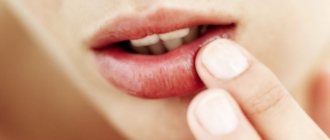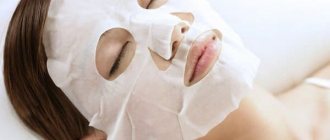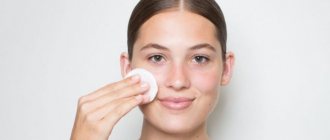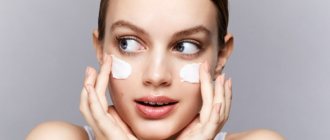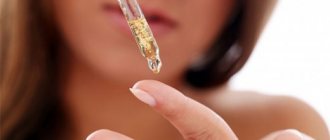After 30 years, every woman begins to notice age-related changes in the skin of the face: the skin becomes dull, the elasticity of the skin disappears, the first wrinkles appear around the mouth, small wrinkles under the eyes. Most modern women are puzzled by the question “how to get rid of wrinkles”? There are many creams, cosmetic procedures and other remedies against wrinkles on the face.
The process of aging of facial skin and its age-related changes is absolutely natural for humans. But rapidly developing as a science, cosmetology strives to keep up with the rhythm of modern life, which requires more and more effective and efficient means for caring for the skin of the face and body and, above all, the development of cosmetics and techniques to counteract age-related changes in facial skin and the appearance of wrinkles
Every year in the beauty industry is marked by the emergence of new types and forms of anti-age techniques and cosmetics.
Today, cosmetic products based on stem cells are a common occurrence for most professionals, despite the fact that the history of the use of cellular technologies in the beauty industry is still very young.
Stem cells are an effective means for facial skin care
Stem cells are the precursors of cells of all tissues and organs of a living organism. The ability of stem cells to differentiate into any tissue makes it possible to use them to restore organs and tissues in a number of serious diseases. Although a lot of research is now devoted to the study of stem cells, their identification is somewhat difficult. The main reason for the difficulty of classification is the lack of specific markers and the fact that the characteristics of these cells change when they are cultured in the laboratory.
The main types of stem cells used in preparations for medicine and cosmetology:
- embryonic stem cells
- umbilical cord blood stem cells
- adult human or animal stem cells
- adipose tissue stem cells
- plant stem cells
How are phytostem cells extracted for cosmetics?
The use of plant stem cells, according to reviews from doctors, allows the release of the necessary active substances in the required concentration. In the future, it will be possible to produce a standard product with clearly defined properties.
Plant stem cell extracts are obtained in 2 ways:
- Natural . Biomaterial containing the meristem is collected in early spring, when active growth of shrubs and trees is observed. Fresh buds, sprouts and shoots are used. Extracts are prepared on their basis by first grinding the raw material and placing it in a nutrient medium. An extractive mixture containing water, glycerin and alcohol is used as a preservative to preserve active substances. However, this technique is not suitable for producing masks, serums, creams with stem cells and other cosmetics in large quantities, since the yield of biological material is considered insufficient.
- Biotechnological . It involves cultivating biomaterial in laboratory conditions based on collected raw materials, which are grown on a piece of plant tissue called an explant, making an incision on it. Plant cells, beginning to actively divide, form a colorless mass here, otherwise known as callus. It is collected and, in order to increase biomass, placed in a nutrient medium containing stimulants. At the final stage of the cycle, the cells are homogenized and the necessary active components are isolated from them. This method of obtaining stem cells for cosmetics is quite expensive, which undoubtedly affects the price of the final product. In addition, there are some difficulties in growing cell mass. For example, callus cells outside the body grow chaotically and lose their ability to regenerate. The “quality” of chromosomes can also vary. Therefore, biotechnological processes for obtaining phytostem cells are at the stage of improvement.
Stem cells - how are they obtained?
To obtain a pure stem cell culture, material is taken that is a source of stem cells (for example, from skin or adipose tissue). A primary cell culture is isolated from this material, purified using a special solution. Then the cells of the primary culture are transferred for cultivation into a special nutrient medium under certain conditions. Then, from the resulting pure culture, preparations are prepared for intravenous, intramuscular, subcutaneous, and external use.
Human stem cells in cosmetics
Many people consider stem cells to be a panacea for all diseases and the elixir of eternal youth, because scientists claim that it is stem cells that give rise to the development of all tissues and organs of our body. Who among us wouldn’t dream of scooping out a jar of some cream with magic cells that will help you look younger! What are these unique cells and can they have a rejuvenating effect on the skin?
Stem cells for cosmetics are extracted in laboratories 12203
History of the use of stem cells
The term “stem cell” was introduced into scientific use by the Russian scientist A. Maksimov in 1908, who was trying to explain the mechanism of rapid self-renewal of blood cells. Since then, the study of this phenomenon has not stopped; stem cells have been found migrating in the blood, as well as in skin and fatty tissues. In the early 1950s. Bone marrow transplantation (the main source of stem cells) has been shown to treat leukemia. In 1998 The discovery of embryonic stem cells and the study of their properties was recognized as one of the most significant events in the history of biology.
Stem cells are found in every living organism. Their peculiarity is that they are capable of changing during development and acquiring specialization of those tissues and organs into which they enter through the bloodstream.
Stem cells differ from other cells in the body in that they can divide indefinitely. Special chemical stimulants can cause new stem cells to degenerate into neurons, pancreatic and liver cells, bone and muscle tissue. Once in a diseased organ, stem cells rapidly multiply and restore damaged tissue. This ability became the basis for the therapeutic use of stem cells.
The value of stem cells for health
Worldwide research has confirmed the effectiveness of stem cell treatment for certain diseases of the cardiovascular system, extensive wounds and burns of the body, as well as the effectiveness of the use of cellular preparations in cosmetology to correct age-related changes in the skin, to eliminate acne, scars and scars. The greatest successes have been achieved in the treatment using stem cells of malignant neoplasms, systemic immune disorders and some endocrine diseases.
This is where else they get stem cells for rejuvenation 12949
The essence of stem cell treatment is their injection transplantation. Stem cells are grown from cells taken from the patient's body, then injected into the problem area to restore damaged tissues and organs.
Where do stem cells come from?
A huge number of stem cells are contained in the umbilical cord of a newborn baby. In the adult body, the main source of stem cell production is the bone marrow. In addition, stem cells are present in minimal quantities in all organs and tissues of the adult body.
For medical, pharmaceutical and cosmetic purposes use:
- embryonic stem cells
- umbilical cord blood stem cells
- adult human or animal stem cells (such as fibroblasts)
- plant stem cells
Cosmetics with human stem cells are prohibited in Germany, Ireland, Spain, France, and the USA.
Stem cells are introduced into the body 14035
However, according to EU laws, cosmetics and medicines cannot contain human tissue or extracts from them. Therefore, anti age cosmetics include plant stem cells that can stimulate the production of new skin cells. For example, the Lancome brand offers consumers anti-aging cream Absolue Precious Cells, which helps restore the potential of skin stem cells and contains plant stem cells.
Stem cells in cosmetics
From cosmetics containing stem cells, women expect a miracle of skin renewal, restoration of its youth, elasticity and smoothness. However, cosmetics with stem cells will not bring instant rejuvenation, because it only contains special enzymes and peptides of plant origin, which, according to cosmetologists, can protect a person’s own stem cells from damage and stimulate their intensive division.
Scientists have proven that plant stem cells are active biostimulators of human cells. This effect is associated with the presence of growth factors in plant stem cells that regulate division, growth and metabolism in human skin cells. Growth factors contained in stem cells help increase skin elasticity, disappearance of fine wrinkles and reduction of large wrinkles. In addition, plant cell preparations are completely hypoallergenic, unlike cell preparations obtained from animal or human tissues.
Stem cell procedures
Cellular mesotherapy has a significant rejuvenating effect on the skin. Its essence consists of subcutaneous injections of a cocktail of fibroblasts with the addition of various stimulating and nutrients. Fibroblasts are cells of the middle layer of the skin (dermis), their precursors are skin stem cells. The injected fibroblasts activate the growth of similar cells in the dermis, resulting in the skin rejuvenating, becoming smooth and elastic.
Typically, 1-3 mesotherapy procedures with stem cells are performed to achieve a sustainable result. The disadvantages of such rejuvenation are the high cost of injections, amounting to several thousand dollars.
It should be taken into account that the practice of rejuvenation using stem cells is relatively new, so there may be negative consequences in the long term.
Stem cells - how do they work?
Stem cells contain all the genetic information of the body about all the processes of its life.
The reserve fund of stem cells, which is present in every living organism, is activated when disturbances occur in the body. Having received the signal, stem cells rush to the affected area. They not only begin to divide in order to replace dead cells of a particular tissue, but also actively contribute to the emergence of new healthy cells.
One of the most studied and clinically proven methods is the method of obtaining and using a culture of animal and human fibroblasts. Due to growth factors, cosmetic preparations based on stem cells contribute to an increase in skin turgor and elasticity, the disappearance of fine wrinkles and a reduction in large wrinkles, and promote the processes of angiogenesis.
Substances of youth
All researchers admit that the meristem cells of plants contain the most powerful growth potential. This manifests itself in a high concentration of active substances. When cells become differentiated and their functions are determined, only those substances that are necessary for this function will remain. The combination of active substances is a guarantee of the future full life of the plant: its formation, protection at the “seedling” stage from unfavorable environmental factors, preservation of genetic information and synchronization of cell division processes. These substances include fatty acids, nucleic acids and amino acids, peptides, vitamins and cofactors, proliferative and antioxidant defense enzymes, phytohormones, and antioxidants. Entire classes of regulatory substances have been discovered that ensure processes of intercellular interaction: auxins, gibberellins, cytokinins, brassinolides, jasmonates, polyamines, peptide hormones. Plant stem cells produce large amounts of ribonucleic acids (RNA).
Numerous studies show that many participants and regulators of plant growth and life support processes have a similar structure to those in the human body. And they even perform similar functions. For example, in 2003, a group of Florentine scientists proved the amazing similarity of plant and human steroids. However, when it comes to extracting certain substances for cosmetics, complete coincidence is not necessary:
“Let’s take simple molecules, the same amino acids,” explains Tatyana Puchkova. “They are the same in plants and humans. If we are talking about some biologically active factors, growth hormones, then, as a rule, these are peptides: short molecules that consist of several amino acids.”
Modern technologies allow us to obtain completely identical compounds from a chemical point of view. With a properly set up “production process”, our body will not care where these substances come from. One such example is the use of hyaluronic acid . At first it was isolated from the lens of a bull, then from the combs of immature cockerels, now almost all of the “hyaluronic acid” is obtained through microbiological synthesis. When a cosmetics manufacturer works with it, the source of origin does not matter to him. The main thing is that it is of high quality and well cleaned.”
Plant stem cells
Plants, just like animal organisms, have stem cells, and their unique properties are used in medicine and cosmetology - after all, each adult stem cell can independently generate a new plant.
Each plant stem cell has a huge range of useful components, being a concentrate of plant vital energy. It has been proven that plant stem cells are active biostimulators of human cells. This effect is associated with the presence of growth factors in plant stem cells that regulate division, growth and metabolism.
Plant growth factors activate the division of cells in the basal layer of the epidermis, stimulate the synthesis by fibroblasts of the main structural proteins of the dermis - collagen, elastin, and the synthesis of glycosaminoglycans. Preparations based on plant stem cells protect the skin from thinning, dehydration and wrinkle formation. An important advantage of using cosmetic products based on plant stem cells is their absolute hypoallergenicity and excellent tolerability.
Stem cells in modern cosmetology: facial skin care cream based on apple stem cells. (USA) has created a series of preparations with intense anti-aging effects based on apple plant stem cells (phytostem cells) - the APPLE STEM CELL series
Stem cells are the most important cells in the process of skin renewal and repair. From stem cells, new cells differentiate in the body, differing depending on their functions. Therefore, one of the most popular and sought-after trends in modern cosmetology is the use of facial cosmetics based on phytostem cells, which can effectively solve problems caused by age-related changes in facial skin: counteracting the appearance of wrinkles on the face, wrinkles under the eyes, wrinkles around the mouth, improving color and appearance of facial skin, increasing skin turgor.
What plants do stem cells come from?
Photo of apple tree stem cells
For the first time, phytostem cells were isolated from the callus of one of the apple tree species. In 2008, the ability of the biomaterial to increase the proliferative activity of human stem cells obtained from the umbilical cord blood of an infant was proven in the laboratory. Research has allowed us to talk about the restoration of the activity of fibroblasts, which determine the production of collagen and elastin, which, as is known, decreases with age. After 4 weeks of using this extract on the crow's feet area, wrinkles decreased by 15%.
These studies and discoveries marked the beginning of the production of cosmetics with plant stem cells. Cosmetic concerns have offered the world product lines containing phytoextracts.
The active substances of the following plants are used to make products:
- Apple tree . It is characterized by great resistance to environmental factors, so phytocells protect the skin from their harmful effects. Cell mass also normalizes skin regeneration.
- Centella asiatica . Controls the tone and permeability of blood vessels, strengthens them, has wound-healing properties, and smoothes the skin well.
- Edelweiss . A great source of vital energy. The main advantage of the plant is its powerful antioxidant effect.
- Red grapes . Accelerates skin regeneration, smoothes existing wrinkles and prevents the appearance of new ones, increases the elasticity of the skin.
- Yew . The extract of this plant has anti-inflammatory and anti-allergenic properties. Thanks to its effects, it is possible to restore damaged skin and get rid of its imperfections. Yew extract also removes pimples and acne.
- Ginseng . The phytocells of this plant stimulate fibroblasts, which are responsible for the production of elastin and collagen. The plant slows down aging, which means preventing the formation of wrinkles. Ginseng extract neutralizes the effects of free radicals and UV radiation, which provoke photoaging.
- Cloudberry . The plant contains special substances that are analogues of female hormones. Thanks to their effects, it is possible to maintain youthful skin.
- Critmum . Sea dill protects against ultraviolet radiation. It also protects against free radicals. The skin is saturated with moisture and the tightness goes away.
Since biotechnological technologies do not stand still and require only a piece of plant tissue to cultivate phytostem cells, it becomes possible to obtain material from rare raw materials with high potential, for example, algae, which are common in Arctic conditions and grow at great depths.
Pictured are grape stem cells
When working with phytostem cells, we can talk about the complete safety of the ingredients: to obtain biomaterial, completely healthy specimens are selected that are not treated with pesticides and grow in natural conditions. It is also safe for both the plants themselves and the environment, since to obtain phytostem cells a small amount of raw material is sufficient and there is no need to destroy entire plantations.
Note! Most often, a cosmetic product contains cells from 1-2 plants. However, some manufacturers also offer products with a whole complex of them - based on 5-6 similar extracts.
Effects of using phytostem cells.
Phyto stem cells
is a revolutionary method of modern cosmetology in the fight against age-related changes, and currently cosmetic preparations based on phytostem cells have won well-deserved recognition. Preparations with plant stem cells protect the skin from thinning, dehydration and wrinkle formation. In laboratory studies, it has been proven that apple phytostem cells protect skin stem cells and support their ability to renew, as well as reduce and prevent the appearance of new signs of aging. In a series of experiments, it was found that serums or creams with stem cells reduce the depth of wrinkles by approximately 8% in two weeks, and by 15% in a month.
Today, plant stem cells are the most promising development in the field of cosmetology, primarily for anti-aging cosmetics for facial skin.
Using the latest technologies, she has created a series of products based on phytostem cells that will steadily improve the condition of mature skin and slow down the aging process, get rid of wrinkles. The results of the experiments show that the use of cellular firming cream increases collagen production in the skin by 37%. Now choosing a cream based on stem cells has become much easier, because the Beauty Style company has created an excellent product for the skin of the face, neck and décolleté!
The aging process is irreversible, cell renewal slows down with age, the body does not have time to fully recover, and the constant fight against diseases, stress and the negative effects of external factors only accelerates the wear and tear of all organs and systems. But the aging process can be slowed down. Using a serum or cream with stem cells, you can maintain youthful skin for many years.
Professional cosmetics with stem cells for cosmetologists and at home:
Active action:
- Targeted delivery of highly effective geroprotective substances to the skin
- Stimulates cellular respiration and metabolic processes in the skin
- Stimulates fibroblast activity
Indications for procedures:
1. Photos and chronoaging2.
Dry, dehydrated, atonic skin 3. Cappillarotrophic insufficiency4. Gravitational change of facial oval 5. Expression wrinkles Clinical effects:
1. Reduces and prevents skin changes caused by natural and photoaging.2. Reduces the depth of facial wrinkles, evens out skin tone.3. Stimulates skin cell regeneration and deeply moisturizes.
Now let’s learn more about professional cosmetics with stem cells for each stage of facial care. Phyto stem cells reduce the depth of facial wrinkles, even out complexion, stimulate cell rejuvenation from the inside, and deeply moisturize.
Cleansing
How does the stem cell rejuvenation procedure work?
The photo shows how stem cell rejuvenation is done
The properties of stem cells in cosmetology have not been fully studied, and their use is still at the research stage. It is difficult to predict the result when using foreign biomaterial from another person, since it can behave unpredictably. For this reason, cosmetology clinics use stem cells taken from the patient himself.
How does the stem cell rejuvenation procedure work?
- Survey . The patient undergoes clinical diagnostic studies, the result of which is the preparation of a “Health Passport”. He will also undergo computer diagnostics of the skin, which compares its condition (biological age) with that expected after a course of stem cell injections. A detailed examination will help ensure that the patient is ready for rejuvenation.
- Stem cell collection . After diagnosis, the doctor collects biomaterial for further cultivation of the colony. The procedure is performed under local anesthesia and is essentially mini-liposuction. The biomaterial can be stored in a stem cell bank and used at any time, even after 30 or 50 years.
- Cell reproduction . The biomaterial is sent to a culture laboratory, where biotechnologists begin to work on it. Stem cells are isolated from the sample and multiplied over a period of 3-8 weeks. Next, the youngest among them will be selected.
- Stem cell injections . They are done directly to the required areas, having previously agreed with the patient. Can be injected into the skin of the face, neck, etc. The procedure for introducing stem cells is carried out according to international protocols.
- Evaluation of the result . The first changes are noticeable a few weeks after the introduction of stem cells, but the full effect can be assessed within 1-3 months. The effectiveness of rejuvenation is determined by the individual characteristics of the human body and differs in each specific case.
- Storage of biomaterial . Unused stem cell concentrate is stored in a special bank where conditions for deep freezing are created, and it can be used for further procedures for many years. Cryopreservation of biomaterial after stem cells have been frozen is confirmed by the issuance of a special certificate.

